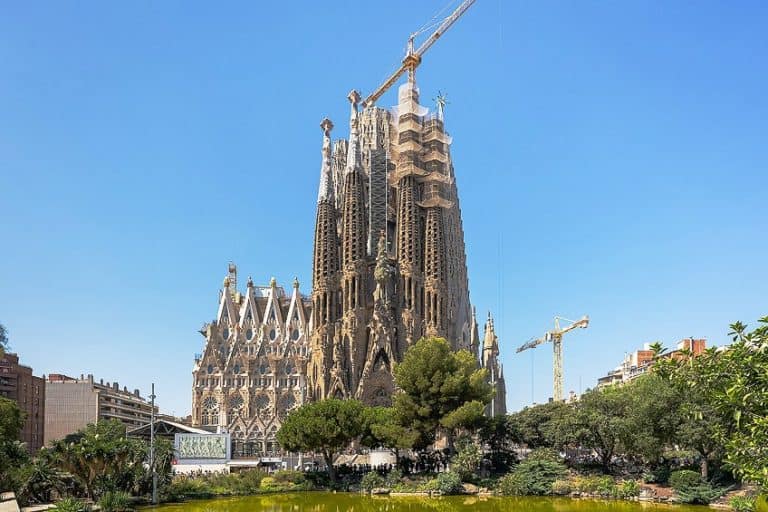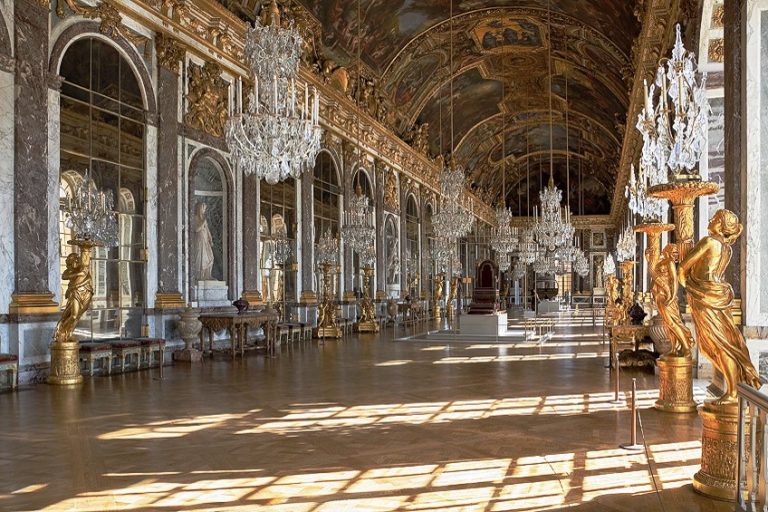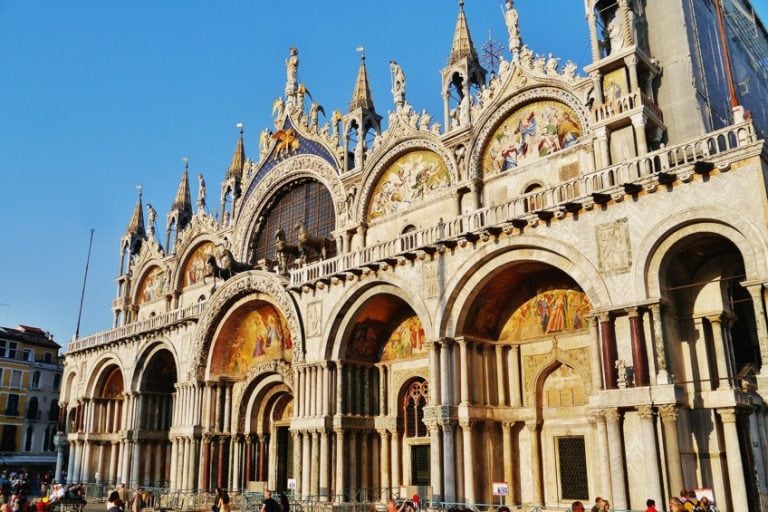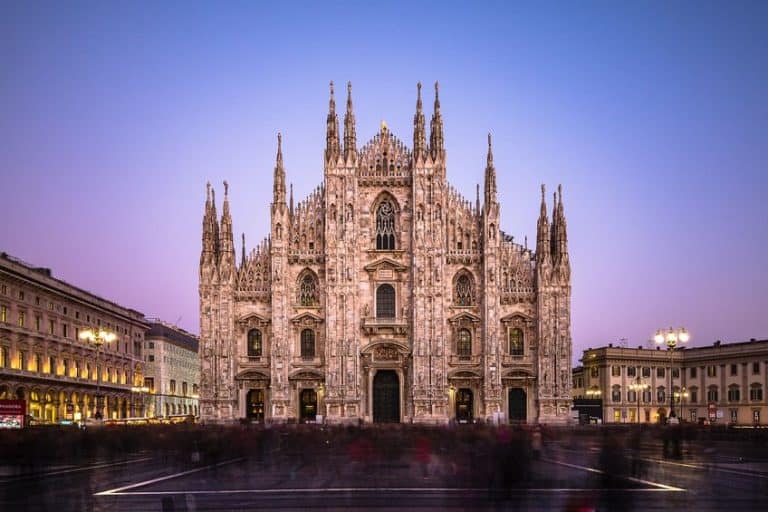What Is Architecture? – A Dive Into the World of Architecture in Art
What is architecture design and why is architecture important? Is every building an example of architecture or is architecture an art? These are all common questions when it comes to the architecture definition. To shed some light on this subject, we have gathered all the necessary information you require on the subject of architecture.
Table of Contents
What Is Architecture Design?
Architecture is the discipline of designing and building a range of structures that are used to meet both functional and aesthetic requirements. Since every culture has a unique relationship with the natural world and with the other cultures around them, the structures it creates convey a great deal about its traditions, history, environment, artistic sensibilities, and many other facets of everyday life.
There are three characteristics that differentiate architecture from other structures that have been built according to the architecture definition:
- The structure is created with human interaction in mind.
- The structure is intended to be permanent and well-designed.
- Its form should convey a specific idea or
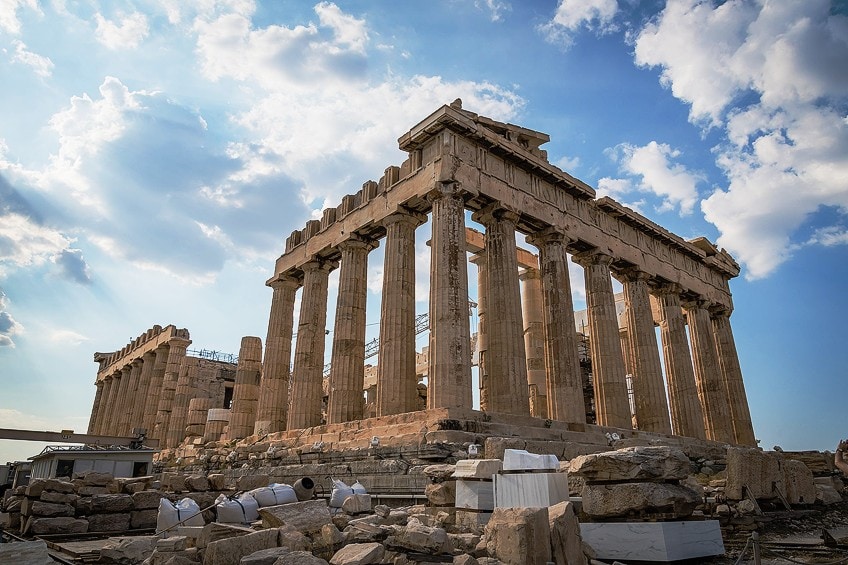
In architecture, all of these requirements must be satisfied. The second requirement listed is regarded as a constant, whereas the first and third change in importance depending on the social utility of the structure. Conveying an idea is less important when its purpose is primarily functional, such as in a factory. When the function is primarily aesthetic or expressive, like in a tomb, functionality is unimportant.
Functionality and communication may be equally important in some instances, such as cathedrals and civic buildings.
Types of Architecture
If we view architecture in art terms, we can draw certain parallels and distinctions between the two principles. Just like artists, architects can only create within their financial limits, so most of what they create is based on the wants or needs of a person or group that has commissioned the work.
So, as much as an architect would love to build the palace of their dreams, most are restricted to designing structures based on various governmental, religious, commercial, or domestic requirements.
Of course, those who make it to the top of their fields of either art or architecture have the luxury of being able to create whatever they want once they are freed of financial restraints. Below, we will take a look at the various types of architecture that exist.
Domestic Architecture Design
Domestic architecture is designed for private residential use, whether for one individual, a family, or a group of housemates. It is where we rest, eat, take our ablutions, and relax, and domestic architecture needs to meet all of those requirements. Depending on the budget and needs of the client, the required design of the residence could be anything from a compact and cozy mobile home to a villa in the hills.
The majority of the population will not demand much from their homes, as construction is expensive.

In a world where people still live in mud huts, even owning a decent home is a luxury denied to many, and it is a very small (but very wealthy) percentage of the population that can afford to create luxurious mansions without any monetary concerns.
For the architects who have the experience and skill to receive commissions from the extremely rich, it usually means that they can design what they would really like to create, as they are not limited financially or creatively.
Religious Architecture Design
What is architecture design in regard to religious buildings? The history of architecture is focused on religious structures more than on any other form since the widespread and lofty attraction of religion made the churches and temples the most emotive, enduring, and important buildings in any community.
Whereas domestic architecture around the world requires the same basic necessities in its design, religious architecture’s typology is far more nuanced and complex.

This is because each religion has a different set of activities and ceremonies that would need to be considered when the structure is being designed. Religious architecture design includes churches, temples, shrines, and religious monuments.
Another type of design closely linked to religious architecture is funerary design.
This can be seen in structures like the Taj Mahal or Lenin’s Mausoleum. Although they might not be strictly religious edifices, they require the same set of architectural demands: to make the person who enters the place experience a sense of awe or wonderment and to create an exalted, divine, and meditative atmosphere.
Governmental Architecture Design
In all civilizations, the key responsibilities of government are identical to those of religion: enforcement, regulation, and justice administration. However, architectural requirements vary depending on the type of relationship the ruling and the ruled have. In the days when royalty still ruled most countries, the decision-making process would usually be in the hands of the monarch.
So pretty much all necessary administrative functions could be taken care of from his personal residence.

However, as the governing process becomes more of a collective task than a personal one, the places built for them to convene need to be designed with the needs of the entire governing body in mind, although one would assume that all that is required is a building to meet in, every administrative branch requires a different design based on its function.
For example, admin offices require a different architecture to judicial courtrooms.
Recreational Architecture Design
Why is architecture important to society? Well, beyond the purely functional role that architecture plays, it also allows for social interaction on a communal level. Recreational architecture design has been the most unchanging form throughout history. Diversions may fluctuate, yet, like with residential architecture, human physicality requires consistency. For example, athletic tracks have remained practically the same for centuries.
A continuous round circuit would be required if an audience wanted to watch a long run from start to end without having to move.

If their participation is purely passive, they must be capable of hearing and seeing the event well from every part of the structure. If their attendance is active, such as an athlete or singer, they must be provided with appropriate venues for their chosen activities. Recreational institutions have their roots in religious ceremonies in most societies, but they quickly achieve independence, and religious representation is now minimized or eradicated in their construction.
Recreational architecture design includes auditoriums, theaters, museums, libraries, art galleries, and stadiums.
The Four Stages of Architecture
What is architectural design? It is not one single process, but rather a sequence of processes that all need to be employed in an architect’s workflow to achieve the result. To describe the stages, we will use the Eiffel Tower as an example.
The Conceptual Stage
The Eiffel Tower began as an idea created by two engineers, Émile Nouguier and Maurice Koechlin, who worked in Gustave Eiffel’s architecture business. The tower was named after Eiffel when he obtained the rights to the engineers’ designs. Eiffel envisioned the tower as the highest tower in the world at the time. To attain this goal, the designers had to create a structure that could endure the enormous wind force at high altitudes.
The tower was also intended to serve as a temporary feature for the World’s Fair in Paris in 1889. Which meant it had to be erected as well as removed after the fair.

Because of its fame and effectiveness during and after the 1889 event, it became a permanent landmark on the Paris landscape. Still, keep in mind that the construction was supposed to be dismantled after the end of the World’s Fair. The initial choice to make the building temporary altered the rationale of its construction.
The final construction would have been quite different if the tower had been intended to be permanent from the beginning. This is why the conceptual stage is important.
The Logical Stage
After determining the conceptual needs for the tower, the following phase in the architectural process was to devise a logical path forward. As a result, Eiffel and his team chose to construct the tower using prefabricated iron components that would be erected in sections and fastened together with rivets.
This meant that by using smaller sections, materials could be easily transported and assembled on-site.

The Structural Stage
The structural design is the next stage. The engineers and architects working on the project achieved this with incredible precision. They created 3,600 precise drawings that represented the structure’s 18,000 various elements.
Every detail of the tower had been planned.

The Concrete Stage
The structural plans were turned into concrete reality by prefabricating the tower’s parts offsite. The pieces were then erected at the tower’s position on the banks of the Seine in Paris. The rivet holes drilled offsite in the iron parts fit together precisely when erected on the main tower.
There was no drilling done on-site.

What is architecture? Architecture may be both a science and an art, both a process and a finished product, and both a concept and a reality. It has been characterized as the conquest of human imagination over resources, and processes, and giving man control of his own universe. Architecture encompasses the design and creation of several types of structures, yet goes beyond just the practical application of building – it encompasses aspects of the surrounding culture and environment, it serves as a way to make life and our living spaces more comfortable, practical, and enjoyable. Architecture design is responsible for the culturally rich structures that have entertained the population for centuries, whether it be ornate theaters where plays or concerts were held or ancient stadiums where athletes tested their abilities against one another, or the temples and churches that created a space that could bring followers closer to their gods.
Frequently Asked Questions
What Is Architectural Design?
It is about designing structures and environments that motivate us, help us perform our jobs, bring humans together, and, at their finest, become artworks that we can interact with. Architects create structures that don’t just shelter people, they express something about the culture too. Architectural design is used to create buildings that are both functional and pleasing to look at. The buildings need to be suitable for a specific function, and architects need to keep that function in mind when designing these spaces. That does not mean that they can’t get creative with it though. Part of human existence is to enjoy our environment, and it is the job of the architect to create living and public spaces that make life easier and more efficient. We can thank architectural design for our houses, museums, public parks, monuments, stadiums, and so much more.
Is Architecture an Art?
Any creative endeavor that requires a certain level of skill can be classified as art. There are even many examples of artists portraying historical architecture in art. As with any industry, one can create something that is purely functional and requires no creative input. But even designing a purely functional product is still a creative process. Yet, some designers take it a step further and add touches to a structure that not only speaks to the needs of the body and mind but somehow can communicate with the soul. That is art.
What Is the Architecture Definition?
To put it simply, it is the practice of designing structures in a multitude of forms for the use of a person or group of people. It is a discipline that requires years of study as an architect cannot design structures that are practically problematic or dangerously unstable. There are many factors that an architect needs to keep in mind when designing a building. The most important aspect of architectural design is creating spaces that humans can interact with easily. Another important aspect is that the structure needs to be durable and permanent, so understanding which materials to use is essential. The last thing is that a structure should convey something to the people who view it. Of course, depending on the function of the building, the amount of influence either of those factors will have on the final design will vary. Some buildings will require more practical layouts with no need for aesthetic considerations, while others could be completely decorative and not require practical considerations.
Justin van Huyssteen is a freelance writer, novelist, and academic originally from Cape Town, South Africa. At present, he has a bachelor’s degree in English and literary theory and an honor’s degree in literary theory. He is currently working towards his master’s degree in literary theory with a focus on animal studies, critical theory, and semiotics within literature. As a novelist and freelancer, he often writes under the pen name L.C. Lupus.
Justin’s preferred literary movements include modern and postmodern literature with literary fiction and genre fiction like sci-fi, post-apocalyptic, and horror being of particular interest. His academia extends to his interest in prose and narratology. He enjoys analyzing a variety of mediums through a literary lens, such as graphic novels, film, and video games.
Justin is working for artincontext.org as an author and content writer since 2022. He is responsible for all blog posts about architecture, literature and poetry.
Learn more about Justin van Huyssteen and the Art in Context Team.
Cite this Article
Justin, van Huyssteen, “What Is Architecture? – A Dive Into the World of Architecture in Art.” Art in Context. September 22, 2022. URL: https://artincontext.org/what-is-architecture/
van Huyssteen, J. (2022, 22 September). What Is Architecture? – A Dive Into the World of Architecture in Art. Art in Context. https://artincontext.org/what-is-architecture/
van Huyssteen, Justin. “What Is Architecture? – A Dive Into the World of Architecture in Art.” Art in Context, September 22, 2022. https://artincontext.org/what-is-architecture/.




